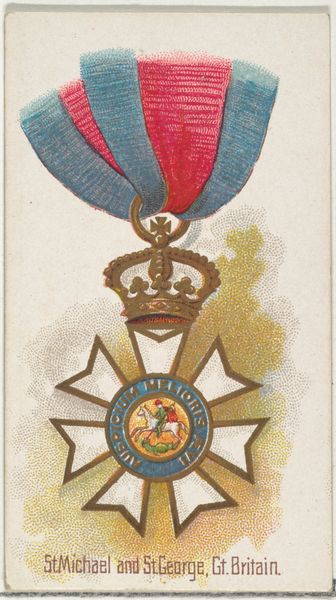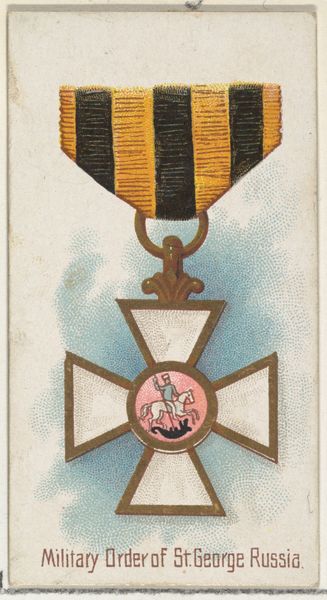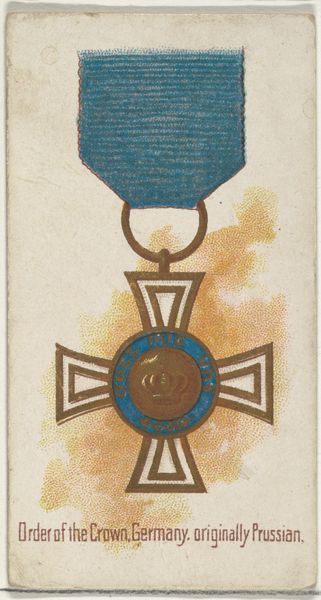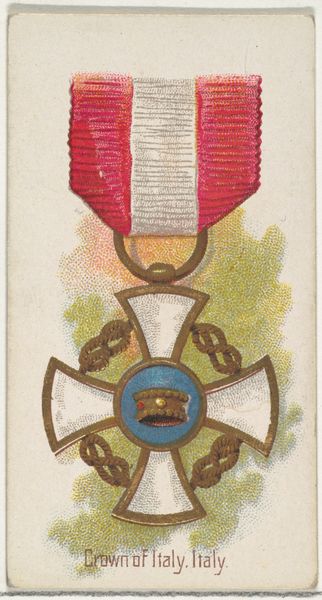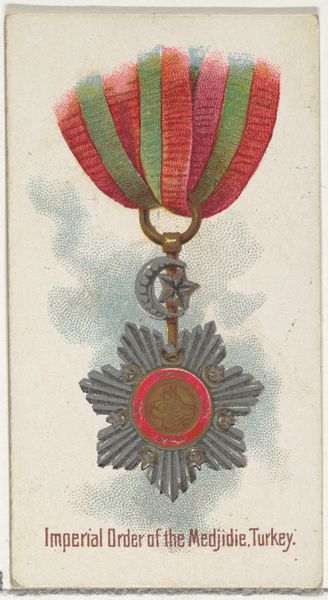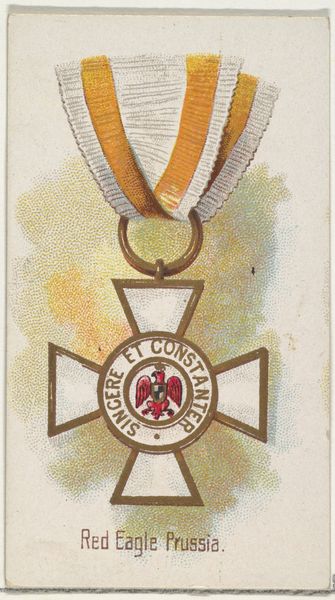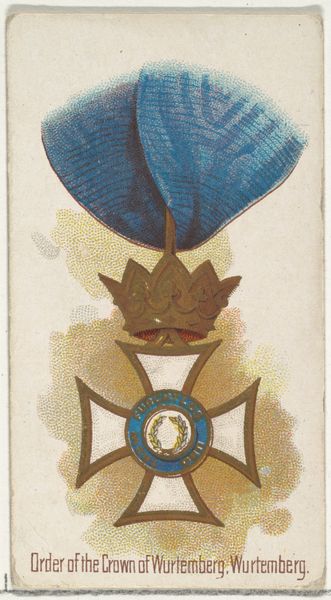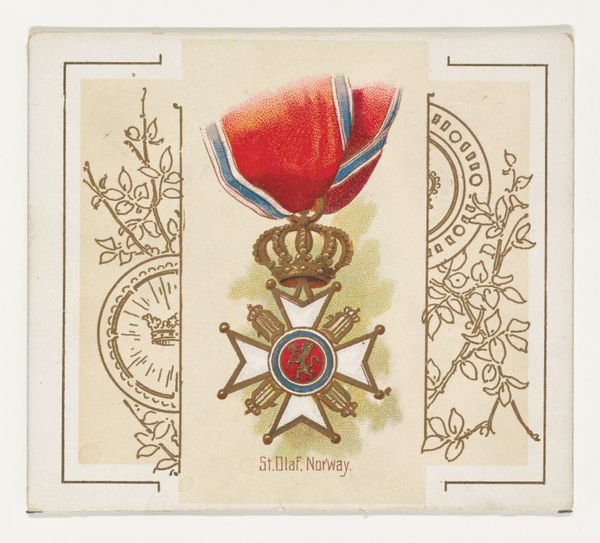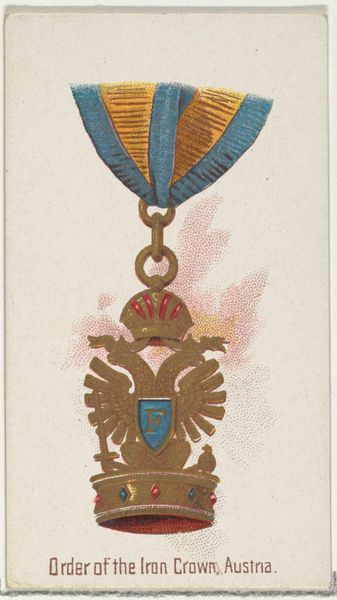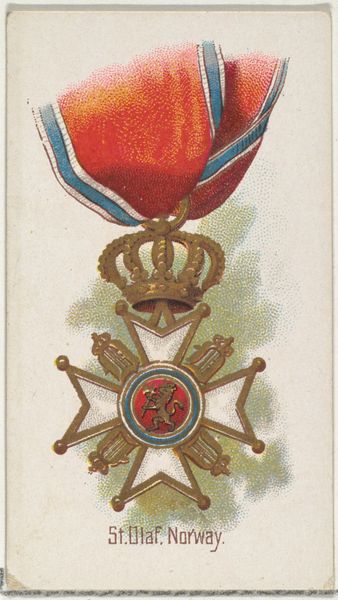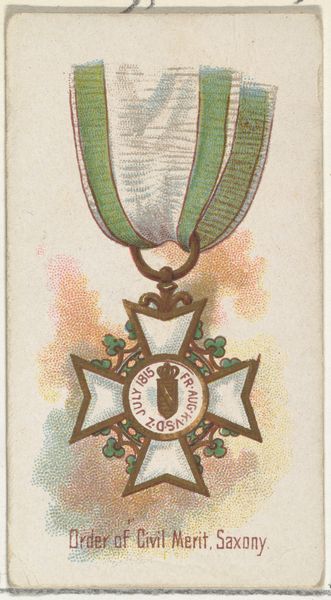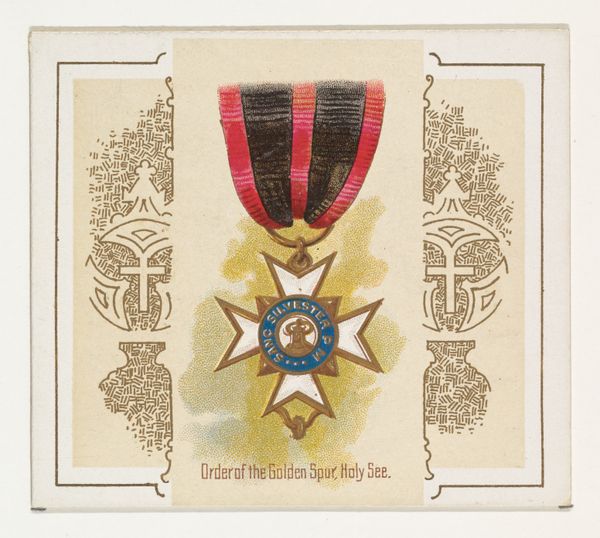
Order of the Golden Spur, Holy See, from the World's Decorations series (N30) for Allen & Ginter Cigarettes 1890
0:00
0:00
drawing, coloured-pencil, print, watercolor
#
drawing
#
coloured-pencil
# print
#
watercolor
#
coloured pencil
Dimensions: Sheet: 2 3/4 x 1 1/2 in. (7 x 3.8 cm)
Copyright: Public Domain
Curator: Looking at this delicate print, what first captures your attention? Editor: It evokes a strong sense of honor and tradition, despite its small size. The medal's sharp lines contrast with the ribbon's softness and suggest formality. What exactly are we looking at here? Curator: This is a chromolithograph entitled "Order of the Golden Spur, Holy See," part of the "World's Decorations" series produced by Allen & Ginter in 1890. It’s a small card, made with watercolor, colored pencil, and print, that was originally included in cigarette packs. Editor: Allen & Ginter cigarettes, an odd association. It's fascinating how these ephemeral objects can hold and transfer meaning across generations. I'm especially interested in how it represents power structures of the time, colonialism, and religious influence as embedded in everyday life through tobacco use. How does the order itself relate to papal history? Curator: The Order of the Golden Spur has a rich and complex history linked to the papacy and knighthood, representing different phases of papal authority. Editor: Notice that cross and crown iconography. Even down to the fine details, these emblems are deeply symbolic. Do the colors hold significance? The black and red feel quite deliberate, almost dramatic against the white of the cross. Curator: Definitely. Red often signifies valor, sacrifice, and even martyrdom, while black can evoke power and solemnity. Together, in this context, they bolster the order's gravitas. It certainly invites questions about what it means to be recognized for actions condoned or promoted by religious institutions. Editor: Looking at it this way invites dialogue on ethical complexities—knighthood as it aligns (or conflicts) with modern ideals of justice and equity. It underscores the inherent contradictions within symbols of power and privilege. Curator: I agree. Its place in popular culture makes it an accessible, even provocative entry point into considering these complexities. Thanks for your insights! Editor: Likewise. Exploring how symbols retain and adapt their meaning is a really rewarding journey.
Comments
No comments
Be the first to comment and join the conversation on the ultimate creative platform.
